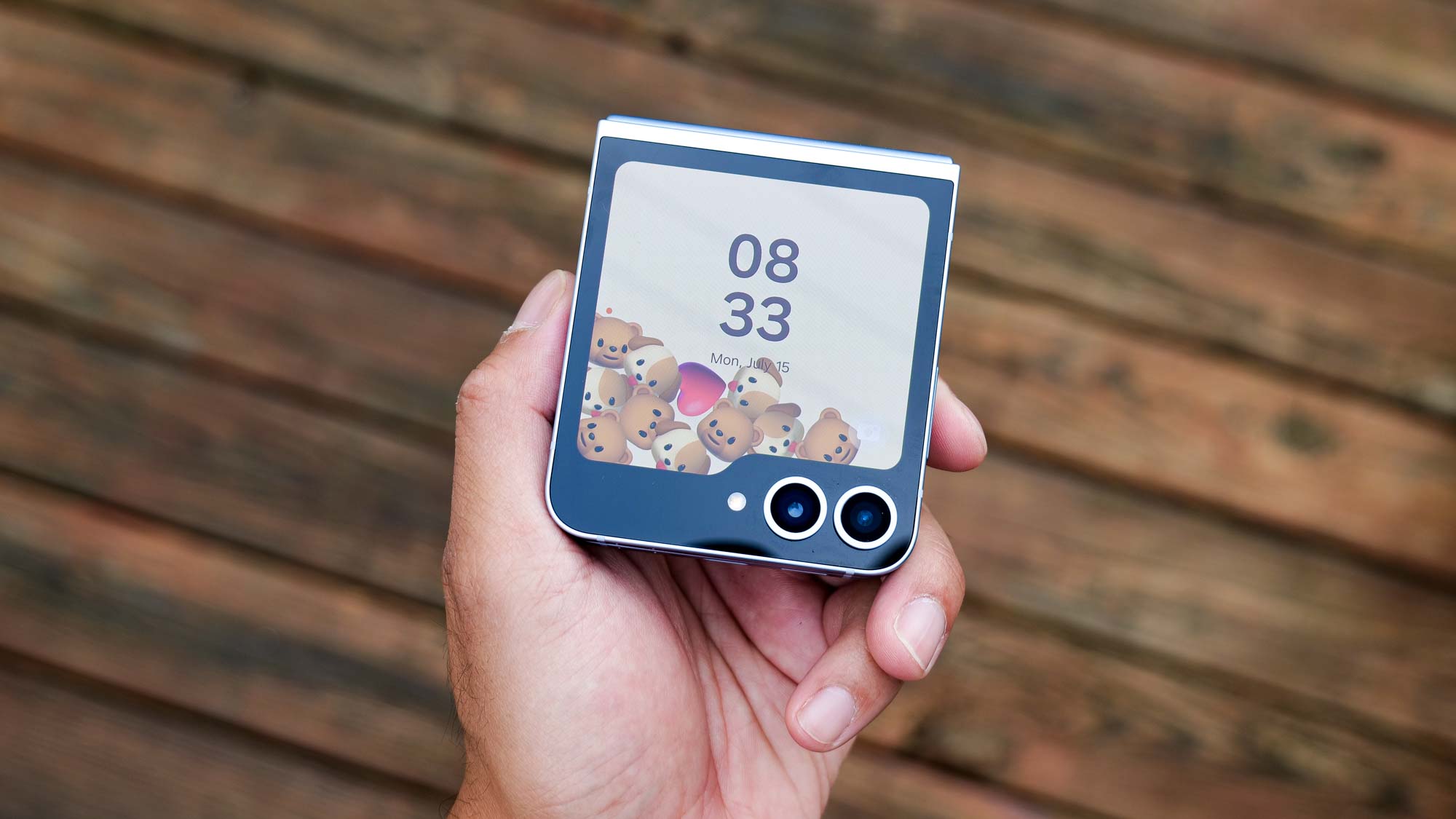The Samsung Galaxy Z Flip 6 has a game-changing AI feature
Interpreter Mode could be huge for travelers

There are a lot of reasons to be excited about AI on phones, and all the things it can help us do that would otherwise require a bunch of training or education to accomplish. The one thing I’m most excited about is real-time translation, and progress towards a hi-tech version of Douglas Adams’ Babel Fish.
There has already been a bunch of work towards this over the years, but for the most part it’s still stuck behind Google Translate. Speak into a phone, wait for the system to translate, wait while the other person gets up to speed and repeat. It’s functional, but it’s not always practical — especially when you're in a hurry.
But I feel like Samsung’s Interpreter Mode, which is part of Galaxy AI, could be the best option to date. The iPhone doesn't have this feature, and it hasn't been announced for the upcoming Apple Intelligence either. And this feature is best on the Galaxy Z Flip 6.
What is Interpreter Mode?

Unlike Live Translate, which is built to translate phone calls in real time, Samsung’s Interpreter Mode is designed to translate face-to-face conversations. How it works is pretty simple: You set the two languages taking part in this conversation and each person taps a microphone button on screen when they’re ready to talk. What they say will appear on screen in both languages, with the translated version read out right after you’re finished speaking.
This feature isn’t new, and first appeared on the Galaxy S24 series earlier this year. Of course since those three phones only have a single screen, it meant both parties had to share what limited display space there was. Samsung did give users the option to flip half of the conversation, so it’s easier to read from opposite angles, but that’s more like making the most of a bad situation.
The Galaxy Z 6 series don’t have that problem, and both the Galaxy Z Fold 6 and Z Flip 6 take advantage of their respective cover displays to separate both halves of the conversation. So you, the phone’s owner, will see your side of the conversation on the internal screen, while the other person will see their side on the cover screen.
It’s a genius idea, because it means no more fighting for screen space. Although it definitely isn’t something Samsung came up with by itself. The Google Pixel Fold added this exact feature, or something more or less identical, last October — after announcing it at I/O a few months earlier. Still, a good idea is a good idea, and it doesn’t matter whether you were first to the finish line or not.
Get instant access to breaking news, the hottest reviews, great deals and helpful tips.
Why the Z Flip 6?

I don’t live in an area with a large immigrant population, so it’s rare that I come across anyone speaking a foreign language. It’s even rarer that I find someone I can’t communicate with in English without actively leaving the country first.
Considering my foreign language education was… lacking, at best, the prospect of using technology to fill in the gaps is very appealing. Interpreter Mode is particularly enticing because it feels like it offers a way to communicate a little more seamlessly and naturally. Each person speaks and listens to their own language, and while it may take a little longer than a regular conversation, it doesn’t have quite as many hoops to jump through as something like Google Translate.
But I don’t like the idea of taking a full size foldable with me when I’m traveling, or on vacation. In fact I tend to try and pack as light as possible where tech is concerned, especially if it’s something I’m carrying around in public.

You can never be too careful, and I feel more comfortable with a smaller and less conspicuous phone. In other words, a clamshell foldable feels like a better option than a giant foldable pseudo-tablet.
For starters, a Galaxy Z Fold 6 is a very expensive device — more expensive than other foldable phones and double what I paid for my last smartphone. I would not want my $1,900 phone to be lost or stolen, even if I had already made sure it was fully insured. While the Z Flip 6 is still $1,099, which is still a lot of money, that’s a little more palatable. It’s also significantly smaller and lighter, which should make it a little easier to carry around and pull out of my pocket when necessary.
Perhaps some people would prefer to be able to display those conversations on a larger screen. It’s not as though the Z Flip 6’s 3.4-inch cover display is small, but the Z Fold 6’s 6.3-inch screen has more room for larger text or longer snippets of conversation. I can certainly see the appeal in that, but I still think I’d prefer to go for the smaller option. Just for the pure convenience of being able to whip it out and not feel like I’m lugging a book around.
Bottom line

There are so many AI features out there right now that it’s easy to be a little overwhelmed by them all. But if there’s one thing that technology has been instrumental in over the past few years it’s closing the physical boundaries and helping human beings connect and communicate — no matter where they are. AI translation is the logical extension of that, helping people talk to each other regardless of what languages they actually understand.
Interpreter Mode is not a perfect solution to the problem of translating conversations in real time. Still the ability to see and hear a translation of what people are saying, and without necessarily having to crowd round a single phone screen to do so, is a very good start. Even if it is limited to a small handful of very expensive phones.
But I feel like the larger the device being used to do the translation, the less convenient the process actually is. Especially if it’s something you have to carry around in a bag or a pocket all day long. Which is why I’m looking forward to seeing Interpreter Mode, and other companies’ variations of it, on foldable flip phones like the Galaxy Z Flip 6.
More from Tom's Guide
- Google Messages is about to fix one of its biggest issues — what you need to know
- I've been testing the Galaxy Z Fold 6 for a week — and this AI feature blew me away
- Android 15 beta 4 just landed — here’s everything that’s new

Tom is the Tom's Guide's UK Phones Editor, tackling the latest smartphone news and vocally expressing his opinions about upcoming features or changes. It's long way from his days as editor of Gizmodo UK, when pretty much everything was on the table. He’s usually found trying to squeeze another giant Lego set onto the shelf, draining very large cups of coffee, or complaining about how terrible his Smart TV is.










